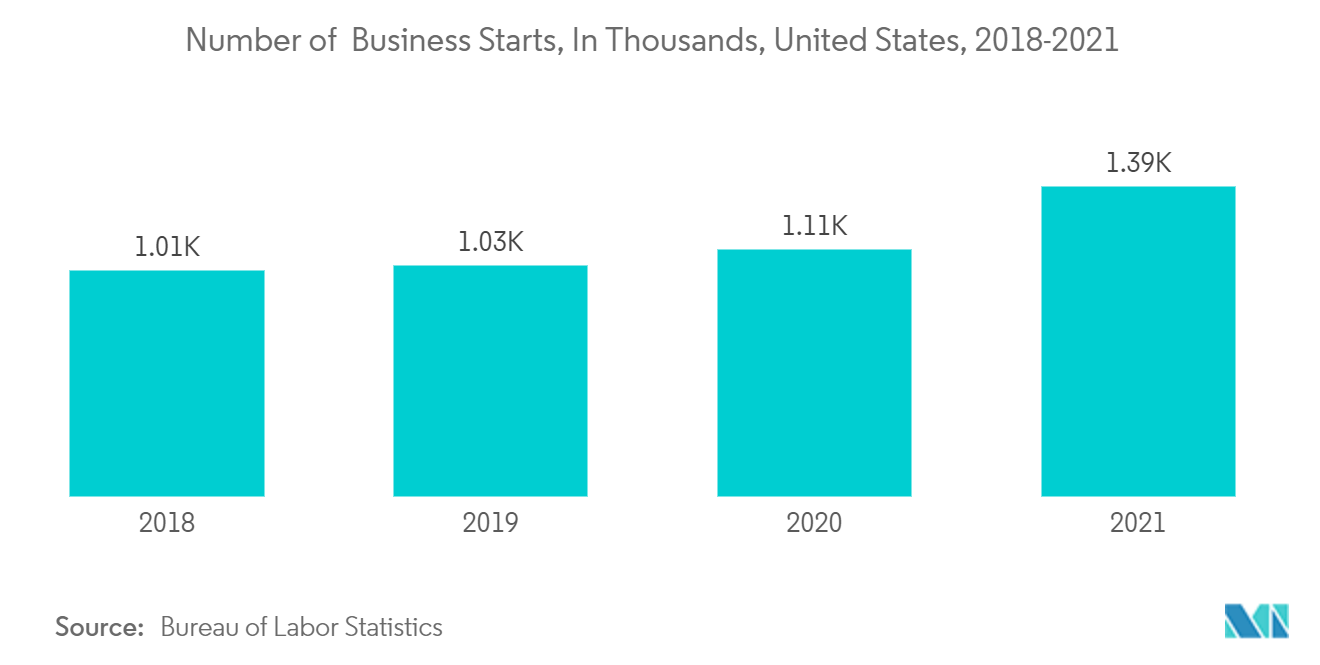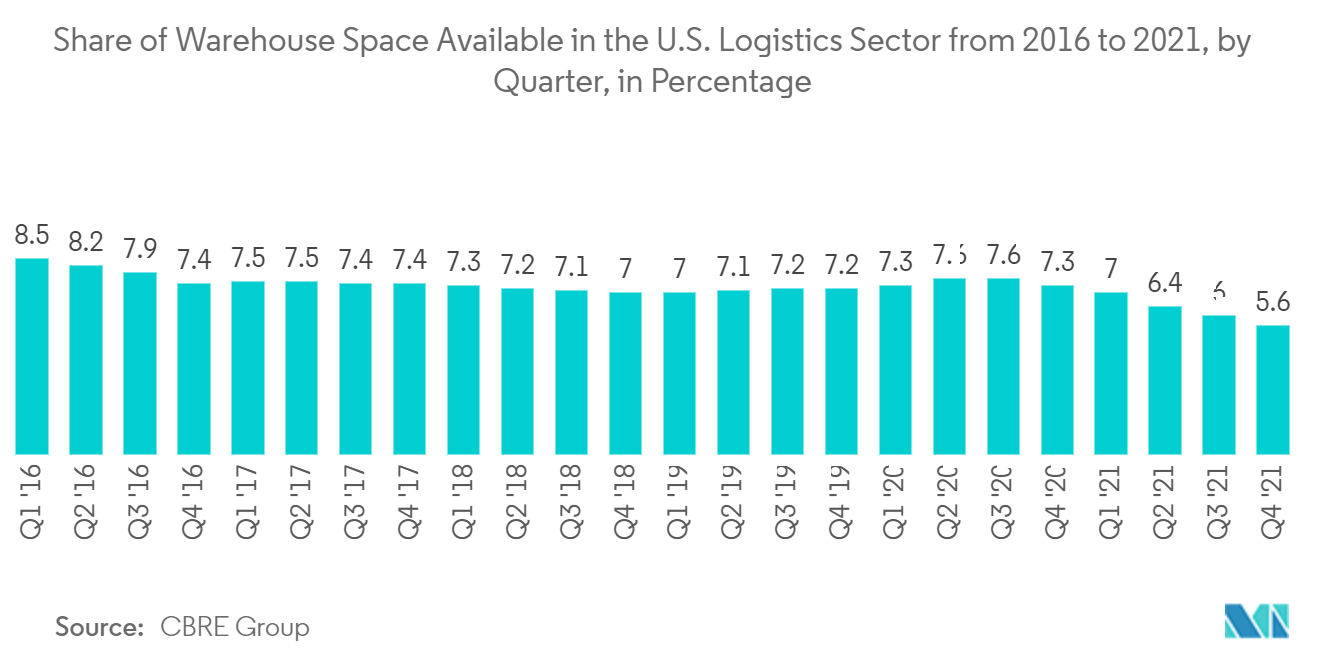Market Trends of United States Material Handling Leasing and Financing Industry
This section covers the major market trends shaping the US Material Handling Leasing & Financing Market according to our research experts:
Small and New Businesses is Expected to Drive the Market
- Strong industry growth and revenue capabilities of businesses in the US have contributed to developing the material handling equipment market. In Q3 2022, The US economy posted its first period of positive growth for the current year. In the third quarter, the GDP, a sum of all the goods and services produced from July through September, increased at a 2.6% annualized pace for the period, contributing to the fastest growth in the country.
- Moreover, the customization of the equipment and systems integrated with the supply chain and warehouse ecosystems is becoming more evident in small industrial sectors and numerous business startups. A further factor driving the material handling equipment demand is the rising labor cost in industrialized nations.
- In addition, the tightening of banks' standards is further expected to impact market growth over the coming years. According to a Lease Foundation report last year, about 38% of banks have tightened lending standards on C&I loans to large- and middle-market firms, while a net 31% reported tightening standards for small firms.
- Due to changes in economic policies, tax reductions, and regulatory reforms, small and new businesses, which comprise a sizeable part of companies engaged in leasing and financing activities, registered an all-time high. Despite many small business owners already feeling the pinch of the US labor market, the potential to expand came from selecting various funding choices.
- Additionally, the US-China trade conflict, which significantly impacted the cost of industrial goods, could eventually reduce consumers' and small enterprises' purchasing power. As a result, this can present new prospects for leasing and lending businesses.

Increase in the Number of Warehouses to Drive the Market Growth
- According to Lease Foundation, material handling equipment investments increased faster in the US last year due to the widespread investment in warehouse construction spending, which increased by 2.4% in January last year.
- The increasing service levels, such as e-commerce and same-day delivery, influence retailers to outsource services. It leads to many small businesses and local companies in the US relying on external warehousing to contain their costs.
- Moreover, by increased use of digital twins and synthetic data modeling, warehouse operators can close the loop between planning, training, and implementation on the floor. With this technology, warehouse performance improved far more quickly and cost-effectively than in the past, leading to the growth of the number of warehouses across regions.
- Therefore, the expansion in industrial real estate construction is expected over the next several years, owing to the demand for industrial warehouses. This further benefits firms that lease or finance construction equipment and materials handling equipment.
- In the last couple of years, the price of various equipment in the material handling market increased, especially for forklifts, which grew at an annual rate between 2.2-3%. It is influencing the demand for leasing such equipment in the country. As the price increase depends on the capacity of the forklift, it is increasingly making sense for businesses to adopt leasing solutions for acquiring forklifts and tow trucks with investments in large automated warehouses increasing in the country.
- According to a real estate company called CBRE, the US currently possesses more than 9.1 billion sq ft of warehouse space. High e-commerce activity and the expansion of warehouses to meet demand have led to rising sales for material handling firms.


